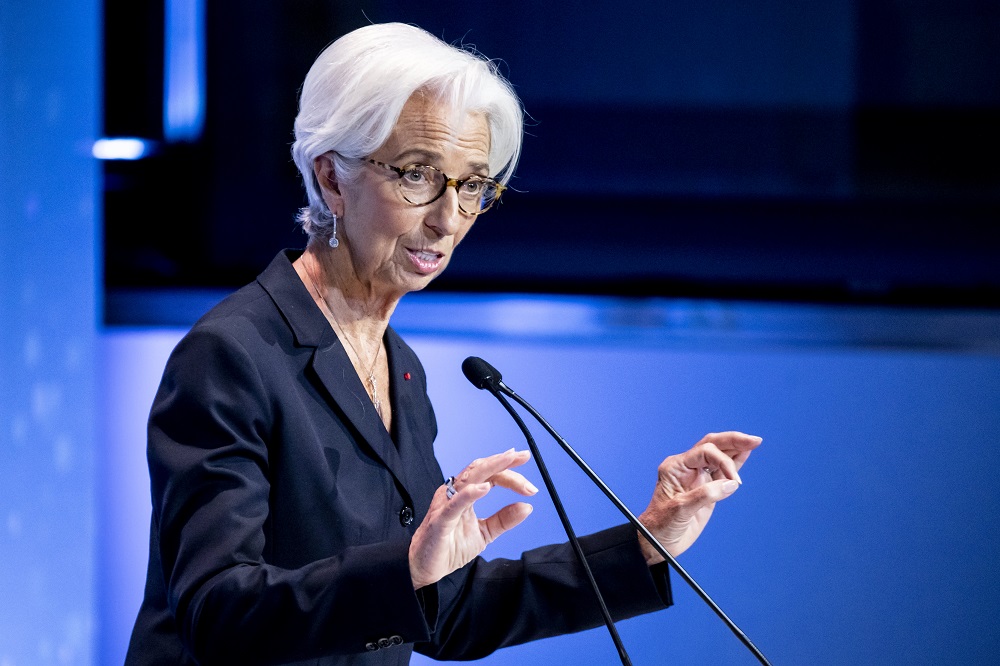Is the eurozone ready for a “global euro”?
The demise of the US dollar this year, both in terms of its value and its perceived global status has prompted ECB President Christine Lagarde to declare that the euro zone has an opportunity to develop the “global euro”.

That’s something that could see both its status and its value increase relative to the US dollar. But, as she said, the euro has to earn this role and, so far at least, it is still falling short.
A key requirement for a “global euro” is a large pool of so-called safe assets. The US has the treasury market which is about the same size as the US economy. But, in the eurozone the sovereign bond market in AA and above rated bonds is just less than a half of GDP (as Lagarde has pointed out). Even this is misleading, for would an international investor seeking a safe sovereign bond regard government bonds from the likes of Slovakia as safe?
Very few investors thought that Greek bonds were particularly safe at the height of the eurozone debt crisis in 2012. Greece was very nearly pushed out of the eurozone because there was no lender of last resort facility from the central bank as there is for a country outside the eurozone. In other words, the Greek government issued bonds but the central bank could not (and still cannot) print euros. A lender of last resort facility is needed to keep the bond market ‘safe’ because the printed euros can always be used to pay down the debt, even at a cost of high inflation.
The ECB famously, but partially, rectified this problem through its ‘do whatever it takes’ moment to save the euro in 2012, as spoken by former ECB head Draghi. The ECB’s answer was to set up the Outright Monetary Transaction (OMT) facility that could buy Greece’s (or any other eurozone country’s) bonds in unlimited size provided that the country had agreed a program of austerity. In the end, the OMT did not have to be used as the market believed that it was a sufficient backstop. The question today is whether this facility truly renders all eurozone bonds as ‘safe’ in the eyes of investors.
In some senses it seems that the answer to this is ‘yes’. This is because the eurozone went through the hugely disruptive Covid pandemic and yet bond markets did not fracture as they had done before the OMT. However, Steven Barrow, Head of Standard Bank G10 Strategy, said there would be two issues to consider here.
The first is that the ECB decided to buy government bonds through this period to avoid any liquidity problems. It did this via its Pandemic Emergency Purchase Programme (PEPP) and the EUR1.7tr of bonds bought under this programme surely helped avoid a repeat of the 2010/12 crisis, in addition to the OMT backstop.
A second point is that use of OMT is determined by the ECB, not a national government. In other words, it could be conceivable that if a country, such as Greece, goes through a near-death experience like 2010/12, the ECB might not decide to buy unlimited amounts of Greek bonds, especially if Greece will not agree an austerity program beforehand.
In other words, the OMT is still not the sort of lender of last resort facility that we see in other countries – such as the UK when the Bank of England stepped in to buy gilts in September 2022 during the infamous Liz Truss gilt market meltdown. Because of this, and because of the EGB’s much smaller size compared to treasuries, it would seem that the region has a long way to go to ‘earn the right’ to challenge the dollar on this front.
As Lagarde mentioned, one positive development would be to grow jointly-issued eurozone bonds. These have been issued to finance the EU’s Next Generation EU regeneration plan during the pandemic but, at just over EUR800bn, are a tiny speck on the total EGB market. More issuance, to fund defence spending, for instance, will help, but there is a very long way to go for this market and we are not convinced that the eurozone is politically bold enough to really go down the single eurozone budget route that critics of EMU have said is needed.
“None of what we’ve said implies that the euro will be forever undervalued against the US dollar. On the contrary, we do see appreciation to 1.30-and above but, in terms of really ‘taking over’ from the US dollar as a safe asset, the euro has a very long way to go”, said Steven Barrow.








